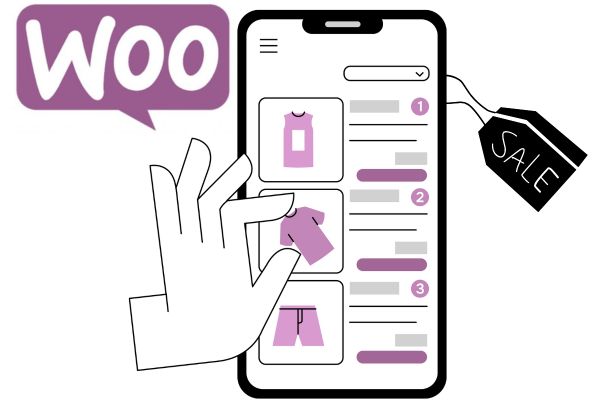Starting an online business using beginner-friendly e-commerce platforms for a side hustle today is simpler than ever before. Thanks to easy-to-use tools and affordable hosting solutions, you can launch a professional online store in just a few hours – without coding, inventory, or a big upfront investment.
This guide walks you through the easiest e-commerce platforms for beginners starting a side hustle, from low-cost website builders to dropshipping and print-on-demand (POD) options. You’ll also learn why owning your own self-hosted website is more profitable and sustainable long-term.
| This page contains affiliate links. If you purchase through our links, we get a commission at no cost to you. Read the full disclosure here. |
Best Easy Side Hustle e-Commerce Platforms for Beginners
When starting an online business as a side hustle, you need an e-commerce platform that’s:
- easy to use
- affordable
- sustainable in the long run
- scalable
- semi-automated, so you’ll have time to operate your e-commerce store with the time you have available, since it’s a side hustle
The top beginner-friendly e-commerce platforms for a side hustle include:
Shopify
Shopify is a leading e-commerce platform that enables entrepreneurs, freelancers, and creators to establish fully functional online stores. While it’s commonly used for selling physical products, it’s also excellent for monetizing digital skills – whether you’re offering digital downloads, online services, coaching packages, or custom work. With powerful tools, apps, and integrations, Shopify is surely one of the easiest, beginner-friendly e-commerce platforms for a side hustle and to scale an online business.
Is it free to join Shopify?
Shopify offers a 3-day free trial, after which pricing starts at $29/month (Basic plan). There are no setup fees, but Shopify charges transaction fees (unless you use Shopify Payments, which avoids extra fees). Additional costs may include paid themes, apps, or third-party integrations, depending on the level of customization you desire for your store.
Pros
- Easy to use, even for non-tech users
- Ideal for selling both digital and physical products
- Tons of themes and app integrations
- Built-in tools for marketing, SEO, payments, and shipping
- Great support and scalability for business growth
Cons
- Some features require higher-tier plans or plugins
- Monthly fees add up, especially with paid apps
- Less customization flexibility than open-source platforms
WooCommerce (WordPress Plugin)
WooCommerce is a powerful, open-source WordPress plugin that transforms any WordPress website into a fully customizable online store. It’s perfect for entrepreneurs and beginners who want full control over their e-commerce side hustle site without recurring platform fees. WooCommerce supports selling physical products, digital goods, subscriptions, and more, with thousands of extensions to add features as your business grows.
Is it free to use WooCommerce?
Yes, WooCommerce itself is free to install. However, you will need web hosting and a domain name, which are affordable with providers like DreamHost. DreamHost offers optimized WooCommerce hosting plans that include free SSL certificates, fast loading times, and unlimited professional email accounts under your domain starting at $16.95/mo, making it a great choice for beginners.
Pros
- Highly customizable and scalable
- Full control over your store and customer data
- Huge library of free and paid extensions
- No platform fees beyond hosting and payment processing
- Ideal for long-term, sustainable ecommerce businesses
Cons
- Some useful extensions may require additional cost
- Requires hosting setup and occasional maintenance
- Steeper learning curve compared to hosted platforms
Related: How secure are WordPress websites for e-commerce? Pros and cons
Squarespace
Squarespace is an all-in-one website builder known for its beautiful, designer templates and intuitive drag-and-drop interface. It’s great for creatives and small business owners who want a visually stunning online store with minimal setup. Squarespace supports physical and digital products and includes built-in marketing tools, so you’re fully equipped to build your e-commerce side hustle.
Is it free to use Squarespace?
Squarespace does not offer a free plan but provides a 14-day free trial. Paid plans start at $23/month (Business plan), which includes ecommerce capabilities. The pricing covers hosting, SSL, templates, and customer support, making it easy to manage everything in one place.
Pros
- Elegant, professionally designed templates
- User-friendly drag-and-drop editor
- Built-in marketing and SEO tools
- Good for stores with small to medium catalogs
- Includes hosting, SSL, and support in one price
Cons
- Less flexible ecommerce features than Shopify or WooCommerce
- Limited customization compared to open-source platforms
- Transaction fees on lower-tier plans
Ecwid
Ecwid is a versatile, beginner-friendly e-commerce platform for a side hustle that lets you add an online store to any existing website or social media page. It’s perfect for beginners who want to start selling quickly without building a new site, or simply building a simple website. Ecwid supports physical and digital products and offers integrations with WordPress, Wix, Squarespace, and more.
Is it free to use Ecwid?
Ecwid offers a free plan that supports up to 10 products, making it ideal for small stores or side hustles. For larger inventories and advanced features, paid plans start affordably. If you pair Ecwid with DreamHost hosting for your website and domain, you get reliable performance, free SSL, and unlimited professional email accounts at great prices, starting at $2.95/month.
Pros
- Easy to integrate with any website or social media
- Free plan available for small stores
- Supports multiple sales channels, including Facebook and Instagram
- Mobile-friendly and fast setup
- No coding required
Cons
- Some integrations require technical knowledge
- Advanced features require paid plans
- Limited design flexibility on free and lower-tier plans
Wix
Wix is a beginner-friendly website builder with a simple drag-and-drop interface that makes setting up an online store fast and painless. It offers hundreds of customizable templates and built-in ecommerce features, including payment processing and inventory management, making it ideal for small to medium-sized stores and perfect for a side hustle e-Commerce.
Is it free to use Wix?
Wix offers a free plan with Wix branding and limited features. To run a professional online store, you’ll need to upgrade to a paid plan starting at $27/month (Business Basic), which includes hosting, SSL, and ecommerce tools.
Pros
- Intuitive drag-and-drop editor
- Large template library with ecommerce designs
- Built-in SEO and marketing tools
- Integrated payment options
- Good for small businesses and side hustles
Cons
- Free plan has Wix ads and branding
- Less scalable for large stores
- Templates can’t be changed after site launch
Etsy
Etsy is a popular marketplace known for handmade, vintage, and creative products. It is a top choice for sellers using print-on-demand (POD) services because it offers access to a large, engaged customer base interested in unique, custom items.
Is it free to sell on Etsy with a print-on-demand service?
Etsy charges a $0.20 listing fee per item and takes a 6.5% transaction fee on the sale price (including shipping). If you use a POD provider like Printful or Printify, they handle printing and shipping, while you manage your Etsy store. Starting on Etsy requires minimal upfront cost, but fees should be factored into pricing.
Pros
- Access to millions of buyers looking for unique products
- Easy integration with POD platforms like Printful and Printify
- Built-in marketplace traffic reduces marketing needs
- Low listing and transaction fees for beginners
Cons
- High competition in popular product categories
- Limited control over branding and customer data
- Fees can add up, especially with POD costs included
Amazon Marketplace
Amazon Marketplace allows sellers to list products alongside Amazon’s inventory, reaching one of the largest online audiences worldwide. It supports both new and used goods, including physical products, digital downloads, and print-on-demand through select integrations.
Is it free to sell on Amazon Marketplace?
Amazon offers two selling plans: Individual (no monthly fee, $0.99 per item sold) and Professional ($39.99/month plus referral fees). Additional referral fees range from 6% to 45% depending on product category. High fees and strict policies require careful pricing and inventory management.
Pros
- Massive customer base and global reach
- Trusted platform with fast shipping options
- Powerful fulfillment services via FBA (Fulfillment by Amazon)
- Suitable for large-scale and small sellers alike
Cons
- Limited direct access to customer contact information
- High fees can cut into profit margins
- Competitive marketplace with many sellers
Gumroad
Gumroad is a simple, beginner-friendly e-commerce platform primarily designed for creators and entrepreneurs selling digital products such as eBooks, courses, music, and artwork. It also supports physical product sales but shines with digital goods thanks to its straightforward setup and easy payment processing, making it great for a wide range of side hustles.
Is it free to use Gumroad?
Gumroad has a free plan with basic features and charges transaction fees of 8.5% plus 30¢ per sale. Paid plans start at $10/month, reducing fees and unlocking advanced features like memberships and analytics. There are no upfront costs or monthly hosting fees, making it ideal for low-budget creators.
Pros
- Extremely easy to use for digital products
- No monthly fees on the free plan
- Supports memberships and subscriptions
- Simple checkout and payment processing
- Great for artists, writers, and educators
Cons
- Less suited for large physical product catalogs
- Higher transaction fees on the free plan
- Limited customization and branding options
BigCommerce
BigCommerce is a robust hosted e-commerce platform designed for growing businesses looking for scalability and advanced e-commerce features. It supports a wide range of product types, multi-channel selling, and extensive integrations, making it a good choice for merchants planning to expand quickly.
Is it free to use BigCommerce?
BigCommerce does not have a free plan but offers a 15-day free trial. Paid plans start at $39/month, which includes hosting, security, and ecommerce tools. Pricing is higher than some competitors but justified by its advanced features and scalability.
Pros
- Highly scalable and feature-rich
- Supports multiple sales channels (Amazon, eBay, Facebook)
- Strong SEO and marketing tools
- No transaction fees on any plan
- Good for medium to large businesses
Cons
- Annual sales thresholds on plans may force upgrades
- Higher monthly cost compared to basic platforms
- Steeper learning curve for beginners
Related: Best Platforms to Monetize Skills and Make Money Online
How to Start an Online Store | Beginner-Friendly e-Commerce Platforms for Side Hustle in 2025
Starting your beginner-friendly e-commerce side hustle doesn’t need to be complicated. Here’s a simple process:
- Launch and market – Promote on social media, use SEO, and collect emails from day one.
- Choose your niche – Products you’re passionate about or that meet market demand.
- Select your platform – Shopify, WooCommerce, Ecwid, or a marketplace.
- Design your store – Use templates, a good WordPress Theme, add high-quality product photos, and write clear descriptions.
- Register a domain name – Go professional with your own .com or country domain.
Related: The ultimate guide to domain privacy: why do you need WHOIS privacy?
Low-Cost Ecommerce Solutions | Beginner-Friendly e-Commerce Platforms for Side Hustle in 2025
If your budget is tight, you can still start strong:
- Etsy – Pay only listing and transaction fees.
- Gumroad – Sell digital or physical goods with minimal fees.
- Ecwid – Start free and integrate into your site or socials.
- WooCommerce (WordPress) – 100% free plugin, just pay for hosting.
💡 Why WooCommerce is a powerful e-commerce platform for beginners:
WooCommerce turns any WordPress site into a fully functional online store. You have full control over your design, branding, and customer data. It’s highly customizable and works with unlimited products.
👉 DreamHost’s WordPress hosting is optimized for WooCommerce, includes a free SSL, and gives you unlimited professional email addresses – making it a smart, budget-friendly choice for serious beginners.
Easy Shop Builder for Side Hustle
If you don’t want to touch code, these shop builders are perfect:
- Wix – Drag-and-drop everything from product listings to banners.
- Squarespace – Minimalist, elegant design with built-in ecommerce.
- Ecwid – Add it to any website you already have, even if it’s just a blog or portfolio.
These builders come with ready-to-use templates, automatic mobile optimization, and easy payment setup.
Sell Physical Products Without Inventory or Digital Products | Beginner-Friendly e-Commerce Platforms for Side Hustle
As an e-commerce side hustle beginner, you have two great product types for an easy start:
Physical Products Without Inventory:
- POD items (T-shirts, mugs, home décor) via Printful or Printify.
- Dropshipped products from suppliers.
Digital Products:
- eBooks or guides.
- Templates (resumes, planners, social media posts).
- Online courses or workshops.
Digital products are great because they have no shipping costs and can be sold an unlimited number of times.
Dropshipping Platforms for New Sellers | Easy Beginner-Friendly e-Commerce Platforms for Side Hustle in 2025
Dropshipping is one of the most popular beginner-friendly e-commerce platforms for a side hustle because you don’t need inventory or handle fulfillment – the supplier ships directly to your customer.
Beginner-friendly tools:
- Oberlo – Works with Shopify for quick product importing.
- Spocket – US/EU suppliers for faster shipping.
- DSers – Free option for AliExpress dropshipping.
Dropshipping lets you start with minimal risk. Just be sure to pick reliable suppliers and clear shipping policies.
Print-on-Demand Startup Platforms | Beginner-Friendly e-Commerce Platforms for Side Hustle
Print-on-demand (POD) is perfect for selling custom T-shirts, mugs, posters, and more without storing or shipping products yourself.
Top POD platforms:
- Printful – Large product range, integrates with WooCommerce, Shopify, and Etsy.
- Printify – Multiple suppliers for better pricing, integrates with WooCommerce, Shopify, and Etsy.
- RedBubble – Marketplace with built-in traffic – great for making some extra money working from home, but not ideal for long-term growth since you can’t directly collect customer emails and have less control over branding.
💡 With Printful and Printify, you can:
- Avoid all inventory and shipping work – you don’t need inventory or handle fulfillment.
- Sell on your own WooCommerce or Shopify store for full control.
- List products on Etsy to leverage their existing audience.
Beginner-Friendly Online Marketplace
If you want to skip building your own site at first and expose your products to an existing audience:
- Etsy – Handmade, vintage, and custom products.
- eBay – Huge reach for a variety of goods.
- Amazon Handmade – Premium marketplace for artisans.
Marketplaces are quick to start but remember: long-term, having your own self-hosted e-commerce side hustle is more profitable and sustainable since that’s the only way you own the customer relationship.
DIY e-Commerce Site | Easy Beginner-Friendly e-Commerce Platforms for Side Hustle in 2025
Building your own self-hosted website may sound intimidating, but nowadays it’s easier than ever – even for beginners. You can literally have your e-commerce side hustle all set up in just a few hours without even being tech-savvy at all.
WooCommerce + WordPress gives you:
- Full control over your branding and design.
- No marketplace fees.
- Ability to collect customer emails and retarget them.
Side Gig e-Commerce Tips | Easy Beginner-Friendly e-Commerce Platforms for Side Hustle in 2025
- Start with one product type or niche.
- Use automation for email marketing, social media scheduling, and order processing.
- Track sales and customer behavior regularly.
- Build your email list from day one – it’s the key to long-term profitability.
Related: How to Monetize Your Skills, Knowledge & Talents Online
FAQ – Easy Beginner-Friendly e-Commerce Platforms for Side Hustle in 2025
What are the easiest ecommerce platforms for beginners?
Shopify, WooCommerce, and Ecwid are beginner-friendly platforms offering easy setup, intuitive interfaces, and customization. Whether you want an all-in-one hosted solution or a flexible plugin, these platforms let you start selling quickly without technical skills.
Can I start an online store with no money?
Yes, you can start with free plans from Ecwid or Big Cartel, or use WooCommerce (which is free) combined with affordable hosting. DreamHost offers beginner-friendly hosting packages with domain and professional email included, making it cost-effective to get started.
How much does it cost to start an e-commerce side hustle?
Basic stores can launch for under $50 using free tools and low-cost hosting. More professional setups with custom domains and emails typically range from $100–$300. Budget for marketing and premium features as your business grows.
Which platform is best for dropshipping newbies?
Shopify with Oberlo or Spocket is ideal for beginners due to easy product importing and supplier management. WooCommerce with DSers is a budget-friendly alternative. Both let you sell products without inventory or fulfillment hassles.
Is print-on-demand a good side hustle?
Yes! Print-on-demand requires no inventory or order handling. Platforms like Printful and Printify integrate with WooCommerce, Shopify, and Etsy, letting you sell custom products easily while focusing on marketing and design.
How long does it take to launch an ecommerce store?
With templates and easy setup tools, you can launch a basic store within hours. Customizations and product uploads might take a few days, but beginners can start selling quickly on platforms like Shopify or WooCommerce.
Do I need coding skills to build an online store?
No coding skills are needed. Shopify, Ecwid, and WooCommerce provide drag-and-drop interfaces and user-friendly dashboards so beginners can manage their stores easily without coding.
How do I choose the right ecommerce platform for me?
Consider your budget, technical skills, and goals. WooCommerce with DreamHost is great for control and scalability. For simplicity, Shopify or Ecwid work well. Also consider product types, fees, and whether you want a marketplace or self-hosted site.






